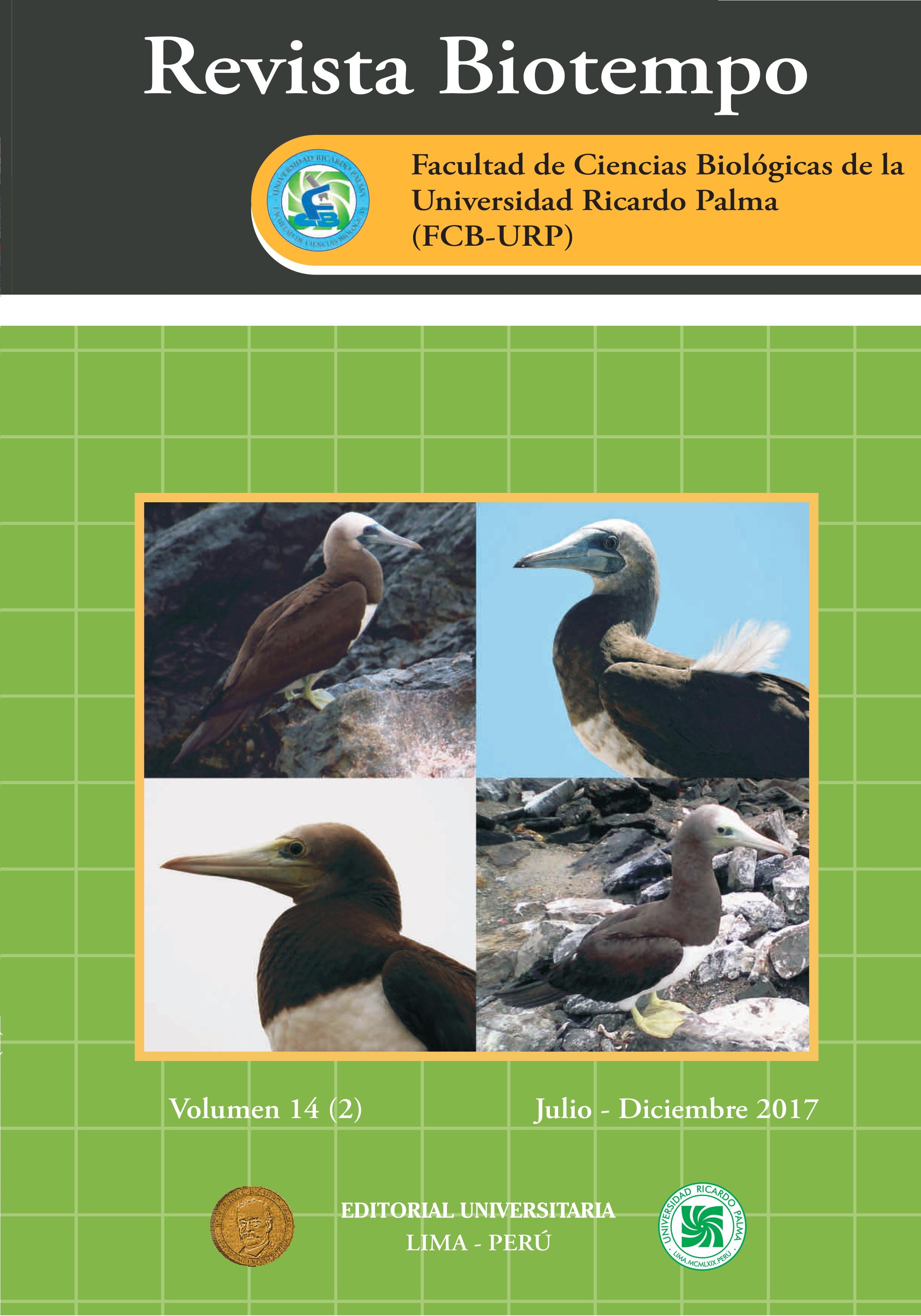PLASMID DESING FOR THE EXPRESSION OF CYND IN ARABIDOPSIS THALIANA VIA AGROBACTERIUM TUMEFACIENS
DOI:
https://doi.org/10.31381/biotempo.v14i2.1320Keywords:
Agrobacterium tumefaciens, Cyanide, CynD, genetic transformationAbstract
Cyanide, used by the mining industries, is a toxic compound which mainly aff ects c-oxidase metalloenzyme in living beings, an essential enzyme for cellular respiration. Th e inhibition of this enzyme blocks oxidative phosphorylation, causing cell death. Biological methods such as phytoremediation provide an alternative to reduce or degrade contaminants such as cyanide. However, this technique would require plants that tolerate high concentrations of the metal present in the soil. On the other hand, some microorganisms have a high capacity of cyanide detoxifi cation due to many metabolic pathways they have, such as Bacillus pumilus Meyer and Gottheil 1901, which presents the cyanid CynD that allows the degradation of cyanide formic acid and ammonium. Th e aim of this research was to design plasmids for the CynD expression in a model plant such as Arabidopsis thaliana (L.), Heynh. via Agrobacterium tumefaciens (Smith & Townsend, 1907) Conn, 1942 to lay the foundations to evaluate if the CynD of B. pumilus could confer to the plants the ability to grow in the presence of cyanide and assist in its degradation. For this purpose, bioinformatic tools were used to design a cloning vector (pUCCynD), inserting in silico the CynD sequence in the polylinker of the plasmid pUC18, among the EcoRi (5’GAATTC - 3’CTTAAG) and BamHi (5’GGATCC-3’CCTAGG) enzymes; and a transformation vector (pBCynD), inserting in silico the CynD sequence into the polylinker of the plasmid pBI121, among the ScaI (5’GAGCTC-3 ‘CTCGAG) and BamHI (5’GGATCC-3’CCTAGG) enzymes.










